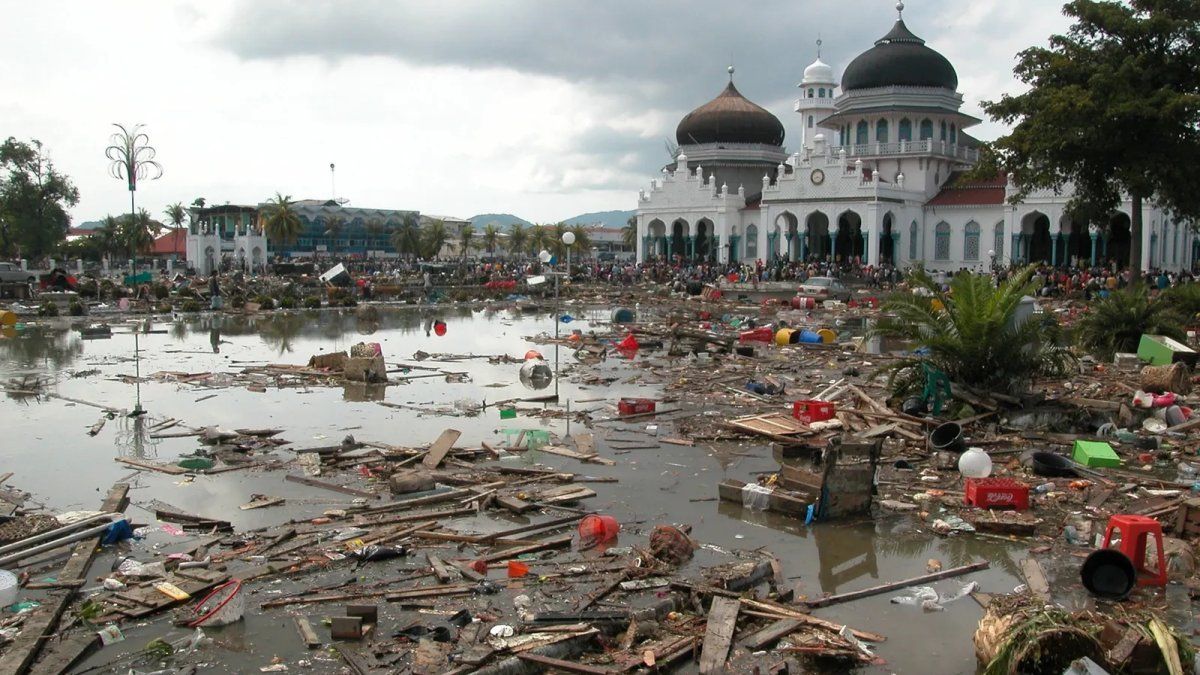On December 26, 2004, the world suffered one of the greatest tragedies in modern historywhen a magnitude 9.1 underwater earthquakeoriginated off the island of Sumatrain it Indian Oceanunleashed a catastrophic tsunami that devastated the coasts of 14 countries, from Southeast Asia to East Africa. The waves reached up to 30 meters high and they traveled at speeds of 800 kilometers, destroying everything in their path.
The impact was brutal and it is estimated that more than 230,000 people lost their livesbeing the region of Aceh Bandin northern Sumatra, the most affected, with approximately 167,000 dead. As the water moved up to six kilometers inland, heCoastal communities were completely destroyed.
Not only Indonesia suffered the damage, but other countries such as India, Sri Lanka, Thailand, Maldives, Myanmar, Malaysia, Seychelles and even Somaliathey experienced the horror of the waves, places where they reached more than 9 meters in height.
Although the impact was global, since sand recorded victims even in places as distant as Californiawhere a wave of just 22 centimeters arrived several hours later, no longer destructive.
Indonesian tsunami 2004 2.jpg
The tsunami destroyed thousands of homes and left 230,000 dead.
The consequences of the tsunami and its statistics
The magnitude of the tragedy was reflected in the disasters it left like the thousands of houses destroyed, infrastructure devastated, and a devastating economic and social impact. In total, the tsunami destroyed 139,000 homes, 73,869 hectares of agricultural land, more than 2,600 kilometers of streetsthousands of schools and companies, and dozens of ports and airports.
Among the victims, the majority were womenwho, due to their lack of training in skills such as swimming or tree climbing, were less likely to survive than men.
The cost of the reconstruction was around US$4.9 billionand the efforts were led by donor countries around the world. However, the emotional and social consequences were profound and They lasted beyond the numbers.
The after the tragedy
The survivors still remember the horror they experienced, and every December 26, in cities like Banda Aceh, communities pay tribute to the victims with religious ceremonies and memorial eventsoften organized in the Aceh Tsunami Museum.
Twenty years later, although many of affected areas were rebuiltthe memory of the tragedy is still alive. In the Banda Aceh region, for example, the coast, once the scene of unimaginable devastation, It was once again occupied by homes, restaurants and other businesses.
However, now the population is more prepared to face possible emergencies. Although life has returned to normal, people continue to remember the lessons of that fateful day and are aware of the protocols to follow in the event of a similar disaster. Local authorities insist the importance of being alert and knowing how to react in the face of a possible catastrophe.
Source: Ambito
I am Pierce Boyd, a driven and ambitious professional working in the news industry. I have been writing for 24 Hours Worlds for over five years, specializing in sports section coverage. During my tenure at the publication, I have built an impressive portfolio of articles that has earned me a reputation as an experienced journalist and content creator.




